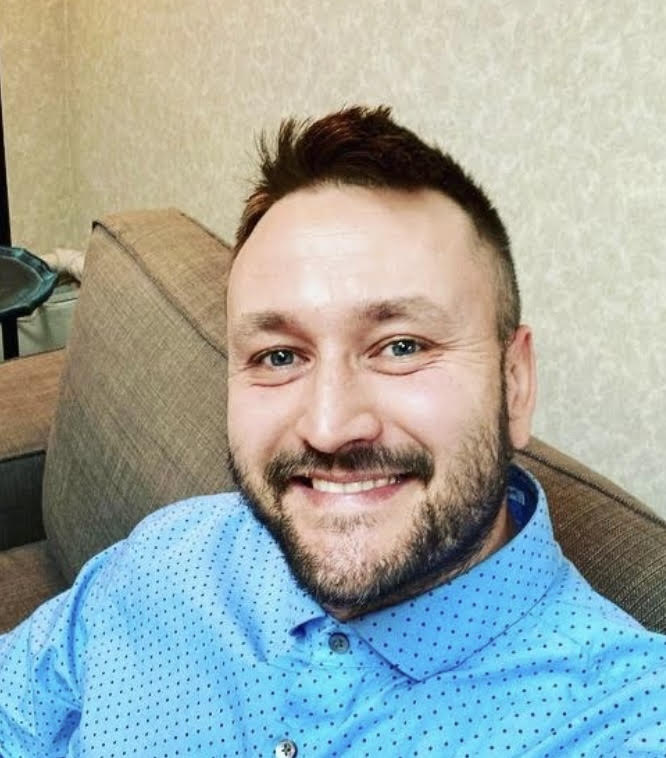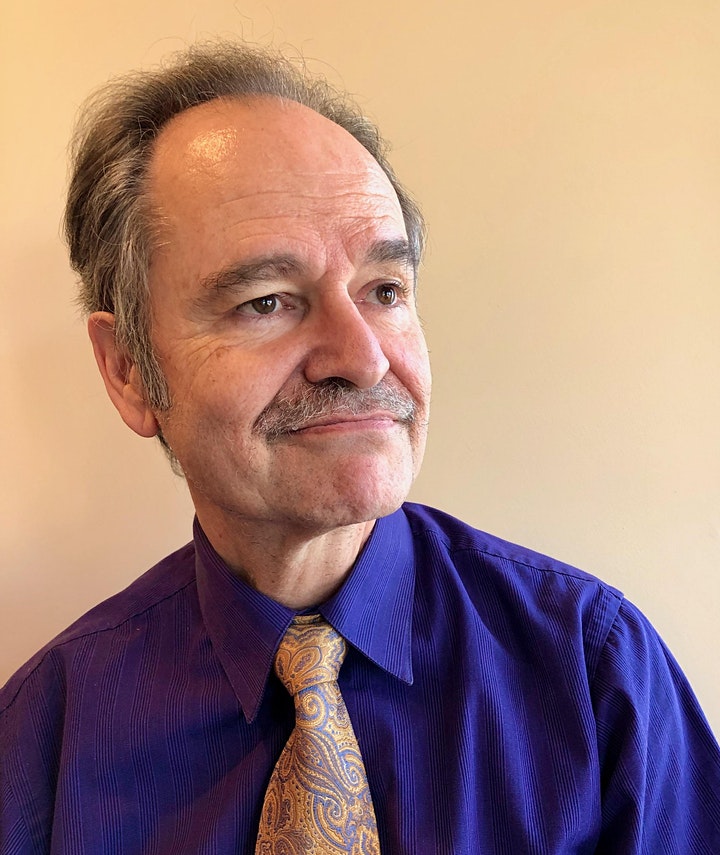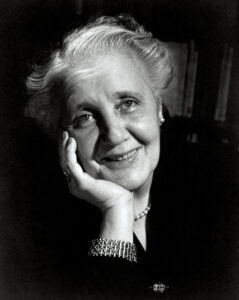Maury Joseph is a licensed clinical psychologist and ISTDP clinician based in Pennsylvania. Before relocating his practice, he served as the faculty chair of the ISTDP program at the esteemed Washington School of Psychiatry. In recent years, Maury has been at the helm of two fascinating seminars, one focused on psychoanalytic listening and the other on interpersonal/relational psychoanalysis. In this interview, we explore the concept of a “relational turn” in ISTDP and what it could mean for the field. Please note that this is a long read.
Thomas: What are you excited about right now?
Maury: I am very excited about this chance you’ve given me to share some ideas that 11 years of study of ISTDP and psychoanalysis have impregnated my mind with. I haven’t put pen to paper on any of the ideas I’ve been working over in the past few years regarding a “relational turn in ISTDP”, so you’ve given me a great challenge and opportunity here. That said, I am also quite nervous about it.
Relational ideas are inherently critical, highlighting and interrogating our biases and preconceptions. If I look at the history of psychoanalysis as a reference, those who bring forth questions that challenge emotionally invested, mainstream ideas tend not to make many friends in the process.
So this is a challenging thing for me—on the one hand loving ISTDP, wishing to conserve and develop Davanloo’s contribution, loving my friends and teachers in this community, and, fundamentally, as a person, wanting more than anything to be liked; and on the other hand, having ideas that might press against and challenge what I conceive of as unexamined group-level assumptions, a practice that has not been known to generate only fond feelings. So I am excited to share these ideas, but also in prayer regarding their reception.
Relational psychoanalysis
For the past years, you’ve been leading a reading group focusing on relational psychoanalysis. For the reader who is not familiar with this branch of psychoanalysis, what are the central principles of relational psychoanalysis?
Relational psychoanalysis is a big tent with a long history, but I’ll summarize what stands out as important to me and what I think might be useful to ISTDP readers. It will inevitably be a biased sample! I recommend some study of authors within the interpersonal/relational tradition to all your readers so they can form their own impressions and see how they compare to mine. Anyone looking for an introductory syllabus, or who might like to hop into one of my reading groups, is welcome to contact me.
For me, relationality is about recognizing and understanding how the therapist’s subjectivity, their history, unconscious biases, preconceptions, theories, neuroses etc., influence the therapeutic process; how the therapist’s mind is in concert with the patient’s mind in shaping the therapy, both the new, maturational experiences and the repetitive, stagnating ones. This is in contrast to other perspectives that see the therapist as more like an objective observer of, and non-participant in intrapsychically-mediated processes unfolding spontaneously and organically from the within patient, unimpacted by the therapist’s unique person.
Relational thinkers give special attention to unconscious enactment—how the patient’s and therapist’s minds conspire to unconsciously live out interpersonal dynamics that turn out to have meaning to both of them. They suggest this is an inevitable, necessary, and ultimately helpful aspect of therapy, part of the therapeutic action.
A relationalist would not aspire to some kind of perfect technique, but would instead value and strive for reflection and conversation about the imperfect human mess that is happening, and for fastidious observation of their participation in it. For this reason, therapeutic success in a relational conception will usually require maturation and growth for both participants; both will become more conscious of their unconscious needs and patterns. This is in contrast to the notion of the therapist as ever-sane, mature, thoroughly analyzed, and able to see the patient’s gambits for interpersonal reenatctment without accidentally (unconsciously) falling into them.
Relational theory is a field theory, in which every clinical event has conscious and, more importantly, unconscious inputs from each participant, such that we are challenged to think about the unconscious co-creation of clinical events like “resistance” or “projection”. We ask questions like, “In what ways is this therapist’s technique unconsciously contributing to the very resistance they’re seeking to reduce?” “Is it possible that the therapist’s approach to reducing this projection is unwittingly reinforcing it?” This is in contrast to an approach that see’s all the pathology and destructiveness in the relationship as coming from the patient’s neurosis, and all the therapist’s behavior as perfectly sound.
Relational thinking also challenges notions of objectivity in the therapist, suggesting that our biases and unconscious blindspots, in addition to the interpersonal pressures we encounter in the relationship, are so pervasive that we ought to approach any of our conclusions with skepticism, bearing in mind the multiple factors that shape them, and keep an open mind to alternative interpretations. This is in contrast to an approach that grants objectivity to the therapist, a capacity to “see things as they are”, without bias.
Following that, there is also a critique of our metapsychologies, our theories about the structures and constituents of the mind. Whereas a dogmatic Freudian might look at certain of Freud’s conclusions as ultimate Truths, a relationalist might look at them as plausible interpretations of data, plausible narratives constructed about the lived interpersonal experiences of one time- and culture-bound man, but not necessarily as universal, ultimate truths.
A relationalist might interrogate theoretical conclusions by thinking about the history, biases and preconceptions, and cultural surround of the theorist, and explore how the techniques he used could unintentionally shape his patient’s responses in a particular way, biasing the range of metapsychological conclusions he could reach.
That is less than the tip of the iceberg, but perhaps good enough for our purposes.
A relational critique of Istdp
What do you think the relational school can offer ISTDP?
One very difficult thing here is the issue that ISTDP is not a monolith, and that I have a deep wish not to let this devolve into a “straw dog” type conversation. Depending on who you’ve trained with, how long you’ve trained, what your training was before you came to ISTDP (including the training of being a child in your particular family), all ISTDP therapists will have different degrees of development of what you could call a “relational sensibility”.
So, I’ll say this: I think that any therapy benefits from increased willingness on the part of the therapist to interrogate their own assumptions. In fact, Jon Frederickson recently related to me a finding that metacognitive capacity in the therapist, our ability to think critically about our thinking, is a better predictor of effectiveness than their intelligence. I think relational ideas provide tools for self-critical thinking that, to me, enhance our integrity and trustworthiness as therapists.
Here are a few questions that relational thinkers might offer us if we wished to do some kind of relational inquiry into our own work as ISTDP therapists, teachers and supervisors:
- Where do we locate pathology in the therapeutic interaction?
Do we tend to see resistance as mainly a product of the patient’s pathology, history, trauma, or do we also take into consideration the ways our presence and technique might evoke, contribute to, or reinforce this thing we label “resistance”?
In a “one-person”, pre-relational psychology, we tend to locate the pathology in the ill, distorting patient, whereas the therapist is seen as sane and perceptive, unobstrusively facilitating the emergence of the patient’s inner life.
The relational perspective might be nicely summarized with some quotes by Heinrich Racker: “We are still babies and neurotics even when we are adults and analysts,” or, “The truth is that [the therapy] is an interaction between two personalities, in both of which the ego is under pressure from the id, the superego, and the external world; each personality has its internal and external dependencies, anxieties, and pathological defenses; each is also a child with his internal parents…”
“We are still babies and neurotics even when we are adults and analysts”
Heinrich Racker
Do we, in resonance with Racker, consider our neurotic contributions to therapy stalemates? Is there room in our theory for the patient’s sanity and perceptiveness, and for the possibility that the phenomena we are coding as “resistance” might plausibly represent the patient’s efforts at self-protection from some unconscious countertransference on our part?
To what extent can we use the concept of “transference” as a defensive denial of our own contribution to the patient’s perceptions of us? Can we consider that some description of us that we wish to code as “projection” might also represent a plausible description of our behavior, but one that we’ve been unconscious of?
I think, in general, we come out of ISTDP training with a highly advanced sensitivity to the ways patients show us their history through resistance and defenses. A relational critique would ask us to expand our theory and clinical thinking to include the ways the therapist’s history also unconsciously emerges in the therapy, and even to consider this a normal part of the therapy process, which can be turned to constructive use if we do not deny its presence. We might also ask how many of our misalliances are the result of such denial?
- What is our theory of what triggers transference?
My understanding is that the conventional belief among early analysts was that transference was a “spontaneous”, intrapsychically-driven response to the “ideal conditions” provided by the analysis: anonymity, neutrality, frame, supine position, etc. At least that’s the straw dog retelling of it.
Later analysts, notably Ida Macalpine and then, later, Leo Stone instead suggested that the analytic situation had very specific contours, very salient valances that would stimulate very particular memory networks. They felt that conventional analytic technique “pulled” for specific rather than nonspecific developmental schemata to be transferred into the relationship. Stone felt, for instance, that because of the inherent separateness built into the situation, separation-related conflicts and memories would be the most likely to emerge in treatment. Interesting theory.
I think that for the most part, in the ISTDP community, our theory of what triggers transference is that it is our “concern”, our “relentless efforts to attach”, our “offering of a secure relationahip”, and the way our interventions, which are both irritating and loving, “trigger mixed feelings that link to past attachments”.
Relational theorists would challenge us to think more deeply and in specific about the forms our “efforts to attach” take, so we can more consciously consider what kinds of patient responses we might prime. I think it would be useful to examine how our particular interventions might “pull” for particular types of responses from patients, prime particular developmental schema or associative and memory networks, resulting in the emergence of particular transferences from particular developmental levels or having to do with particular developmental conflicts.
Macalpine, Stone, and many others called into question the idea that must simply create the “ideal conditions” for the spontaneous unfolding of the patient’s repressed mental life, and they challenge us to carefully describe the unique conditions that we create, and to consider how those particular conditions might evoke selective rather than general aspects of the patient.
- Along those lines would be questions about our metapsychology.
Insofar as any technique will prime particular associative networks, evoke particular interpersonal schema, etc., then the findings of our work are always somewhat biased or shaped by our approach to the patient. From those findings, we make extrapolations about the nature and constituents of the mind, our metapsychological claims.
In the ISTDP world there does seem to be strong consensus about the metapsychology of the unconscious, the “concentric circles” (see below), the cascade of feelings of warm bond, trauma to the bond, pain of trauma, reactive rage, guilt about the rage, and defenses against that. At conferences and presentations, our technique seems to confirm this by turning up this same pattern again and again, and I think we tend to assume that what we find through our technique represents a kind of bedrock of human psychology.
A relational critique would invite us to ask whether and to what extent our sense of the bedrock of human psychology could be an artifact of the way we approach the human subject, and whether a different approach might point to a different underlying structure of the mind, or of neurosis? We’d be invited to wonder whether our approach selectively evokes some reactions and not others, and whether this is shaping our conclusions about the nature and constituents of the mind in a biased way.

- Finally, and very much following on #3, a relational critique might ask us questions about our relationship to our theory.
To what extent does our theory—our ideas of how the mind works, what makes symptoms, what a mind needs to experience in order to have less symptoms, etc.—guide our relationship to the patient?
In what ways do our theory and preconceptions lead us to pursue some lines of inquiry and not others; to make certain inferences about the deeper meaning of what they’re saying and not others? How much does our theory shape the patient’s experience in their therapy? How much and in what ways should our knowledge and preconceptions drive their therapy process? Do we guard adequately against situations of submission and compliance, in which the patient conforms to the agenda that our theory presents to them?
ISTDP is, in my opinion, unique among the dynamic therapies in that it has the best-developed system for monitoring unconscious signals from the patient and detecting error-correcting feedback; ISTDP-trained therapists are, in my opinion, usually uniquely capable of staying close to the patient’s experience, letting the patient’s productions lead, learning from the patient as they go.
However, ISTDP also has – perhaps uniquely among the dynamic therapies – a highly schematized procedure with an avowed hierarchy of optimal outcomes. This creates a kind of identity conflict for the therapist: I am uniquely well-trained to follow the patient, but I also am uniquely filled up with ideas about where the patient ought to go.
So perhaps there is a unique need for us to examine our relationship to our theory, and to pay careful attention to the vicissitudes that occur in that relationship during sessions. This would be very much in the spirit of relational inquiry.
To me, the perspective that the therapeutic reality is co-created by the analytic dyad is an attractive, sympathetic one. But there’s been quite a lot of critique that this perspective leads to relativism, and that relational psychoanalysis represents a postmodern dilution of psychoanalysis. One of the strengths of ISTDP is its assertive use of “concrete reality” when encouraging the patient to face reality and turn against defenses. Do you think a relational turn in ISTDP would risk losing some of this strength?
I think it is overreliance and inflexibility around a particular perspective, not the particular perspective itself, that can take away our strength. I can sin equally against the patient in the name of knowing or of not knowing reality.
Some therapists are more vulnerable to anxiety about knowing—do I dare have an opinion? Authority? They will characteristically have trouble asserting themselves, setting boundaries, making confrontations, and this, of course, will threaten alliances and weaken their work.
Others are more vulnerable to anxiety about not knowing, and will tend to defensively superimpose clarity on experiences that are probably still open to multiple interpretations. Perhaps they will tend to relate to the patient dogmatically, ritualistically. Therapy here will be weakened because the we will not be able to perceive and cope with the full complexity of the encounter, and patients will feel stuffed into a tiny preconception, or stretched on a bed of Procrustes.
I think what a real relational turn would ask is not a radical relativism, which has indeed been much critiqued, but instead a disciplined attention to our relationship to knowing, an intentional inquiry into how we experience vicissitudes in knowing during the clinical encounter, and an effort to make meaning out of that.
For example, I feel very sure of my perspective on reality right now—what does that mean? Could that be an artifact of forces in this relationship? Is that a position that I’m uniquely attracted to due to my own anxieties, or one that the patient uniquely longs for me to embody because of hers? Or, alternatively, Why am I so anxious about confronting this patient right now? Am I allowed to share my perspective on reality in this relationship? What about in other relationships? Does my hesitance have resonance with dynamics from the patient’s other relationships or early life? Mine?
A subjective sense of knowing or not knowing “concrete reality” can have a wide range of rich meanings, and I think attention to these meanings can only serve to strengthen our work. Without this analysis we can devolve into pseudo-omniscience, believing we know reality because we feel like we know reality, which would ultimately weaken us.
practicing ISTDP
In what ways has your own practice changed as a consequence of diving deeper into relational thought?
I’d say I listen longer before I intervene and intervene more cautiously, and importantly, I have begun to take very seriously the observation of my own participation. I pay a great deal of attention to the pressures and anxieties I feel in the sessions and try to use those feelings to make sense of what’s happening, wondering what those feelings say about the patient, about me, about possible unconscious determinants of our interaction.
I try to listen to the words that are coming to my mind or out of my own mouth, and I try to think about the ways my thoughts and interventions might reflect or represent some heretofore unconscious (now becoming conscious) participation in an enacted relationship paradigm.
I’ve also become quite a bit more forgiving of my humanness. It used to be that when I’d have some kind of enactment or misalliance, I’d run to supervision and hit the books looking for a way to perfect my technique so that I wouldn’t be in that embarrassingly normal situation ever again! I think that now I try to do my best with what does happen, learn from it, and try to make meaning out of it, rather than push myself or the patient to embody some image I have of what “should”happen.
I am striving to have fidelity to the patient’s unconscious signaling system more than anything else, even when that requires that I abandon any wish for fidelity to a particular technique or metapsychology.
What are you struggling to learn as a therapist at this moment?
I’ll take your question in a slightly different direction to what I’m struggling with as a teacher. One question I’m wrestling with a lot is how to teach ISTDP in a way that evades, to whatever degree possible, dogmatism, ritualism, and idealization. Some amount of all of this is inevitable because it depends in part on the psychology of the trainee. However, I am trying to figure out how I can teach in a way that ensures I am not feeding that tendency or am actively countering it. I’d be happy to go into more detail about that, but that’s probably another interview.
As a therapist, the task for me right now, as always, is continuing to expand affect tolerance and continue to tolerate the shattering and death of ideals and preconceptions. They go hand in hand fortunately. I think my unconscious motivations for becoming a therapist, how I thought it would go, are more or less the opposite of how it actually has gone. I went to some Jon Frederickson presentations, saw these amazing sessions, and Jon would get a round of applause at the end, and at some level that is what I thought it would be.
The hard learning thus far for me is that therapy is actually painstaking work, with only occasional gratification and many injuries and insults along the way. This has been a difficult adjustment that has required much work. So that’s the big ever-struggle, the work on me. But I am lucky to be surrounded by family, friends, and colleagues who help me.
Where do you want to see ISTDP going in the coming years?
I don’t know where ISTDP is going, but if I could have a wish granted I would love to see us have a domain-specific journal where controversies and conflicts could be hashed out. Without an ISTDP journal most new ideas are published in formats like this, or on social media platforms, where there is no peer review, no refereed platform for scholarly debate. I think that could weaken our field over time. I think there is much room for debate and controversy left in ISTDP, and many questions that we treat as settled could benefit from some reopening and interrogation. We can’t do that without a journal and editorial board.
Another wish I’d love to have granted in the coming years would be the disappearance of the phrase, “It’s interesting,” or, “Maybe it’s therapy, but it’s not ISTDP”. I have been hearing it a whole bunch lately! To me it reflects a ritual-based conception of ISTDP, where ISTDP is about using some specific vernacular rather than what I think is, in my opinion, it’s essence—careful fidelity to the signaling system of the unconscious. I think we need an examination of exactly what is ISTDP, and if we had a journal it would be fun to hash this out.
To me, ISTDP is at least 2 things—an assessment system for determining the “position of the unconscious”, and, separately, a package of interventions. Lately I have encountered, much to my dismay, numerous people holding the opinion that if you are not using the package of interventions (pressure, challenge, and head-on-collision) in a way that at least partially uses the boiler-plate language of the founder, then what you’re doing is not ISTDP. I see it differently, and would love to have my perspective considered:
My current working definition of ISTDP is any approach that works with resistance and transference and utilizes – what I think is Davanloo’s most important discovery – a signaling system of the unconscious. I aim for a kind of “optimized” (by attention to signaling) dynamic therapy.
For my purposes at this point, ISTDP is no longer defined by what I say to the patient, even if my words are occasionally modeled on words I learned from Davanloo, nor by specific events like unlocking, even if they do occur anyway, but instead by a careful attention to the manifestations of unconscious communication via the body and speech of the patient, and by a highly focused effort to make interventions that facilitate the continued emergence of such communications.
I understand that mine is a loose definition of ISTDP, but I also think it allows me a great deal of room for creativity, a creativity that I find very necessary in working through the thorny moments of clinical practice that no book or training could have prepared me for. I worry about what kinds of creativity are choked off, and what kinds of therapeutic processes and experiences are missed, when we limit our definition of ISTDP to a particular set of words and discrete processes, as opposed to an infinite set of interventions and processes that have a shared essence.
Perhaps one final thing is that I’d love to see continued critical appraisal of Davanloo’s ideas. I think a major step in this direction is represented by Mikkel Reher-Langsborg’s recent lecture on YouTube, dismantling the notion of Davanloo as a monolithic, tracing an evolution and thinking critically about that evolution. Bravo, Mikkel!
Like early Freudians we tend not to critique Davanloo. We take his findings as a final say. I think the style in which his articles are written has contributed to this. Only his interpretation of the events is given, and are often asserted with a certaintistic verbiage. Alternative perspectives are rarely given, and if they are given at all, are dismissed or even mocked. As an author he positions himself as beyond critique, beyond alternative explanations, and I think this has fostered some of the idealization of him. His writing style plays right into the ideal-seeking tendencies of many trainees, though it surely pushes others away.
I think there is quite a lot from Davanloo that could bear some interrogation.
Psychoanalysts have had to sort out what aspects of Freud’s ideas were sociohistorical artifacts, or products of his own unconscious biases so that they can identify and conserve those aspects that show a more timeless power and relevance. We have had none of that in ISTDP, and I think that part of the conservation of Davanloo’s genius contribution will also require a critical appraisal. Right now there is none of that in the literature, so I think we tend more towards unthinking acceptance that inhibits creativity, exploration, and new discovery.
This is a terrible irony—Davanloo gave us very powerful tools for exploration and discovery, and yet we seem to only want to confirm again and again what he already found. So, I think that is, more than anything, what I’d like to see in ISTDP in the coming years—new discoveries.
If you liked this interview with Maury Joseph, you might like some of our other interviews that we’ve published previously. For example, you might appreciate this Patricia Coughlin interview on the limitations of ISTDP, or this interview with Johannes Kieding on the vulnerabilities of ISTDP to misalliance. Or have a look at this list of the last seven interviews (in different langagues):
- Niklas Rasmussen: “Det är så lätt att tappa bort sig själv i ISTDP”
- Maury Joseph: “How much does our theory shape the patient’s experience?”
- Ola Berge: “ISTDP erbjuder ett perspektiv som saknas i psykiatrin”
- Johannes Kieding: “ISTDP is uniquely vulnerable to misalliances”
- Jonathan Entis: “Defiance is the single most important defense”
- Ange Cooper: “I am my patient, they are me”
- Mikkel Reher-Langberg: “Vi använder Davanloos ord, men musiken är annorlunda.”

















